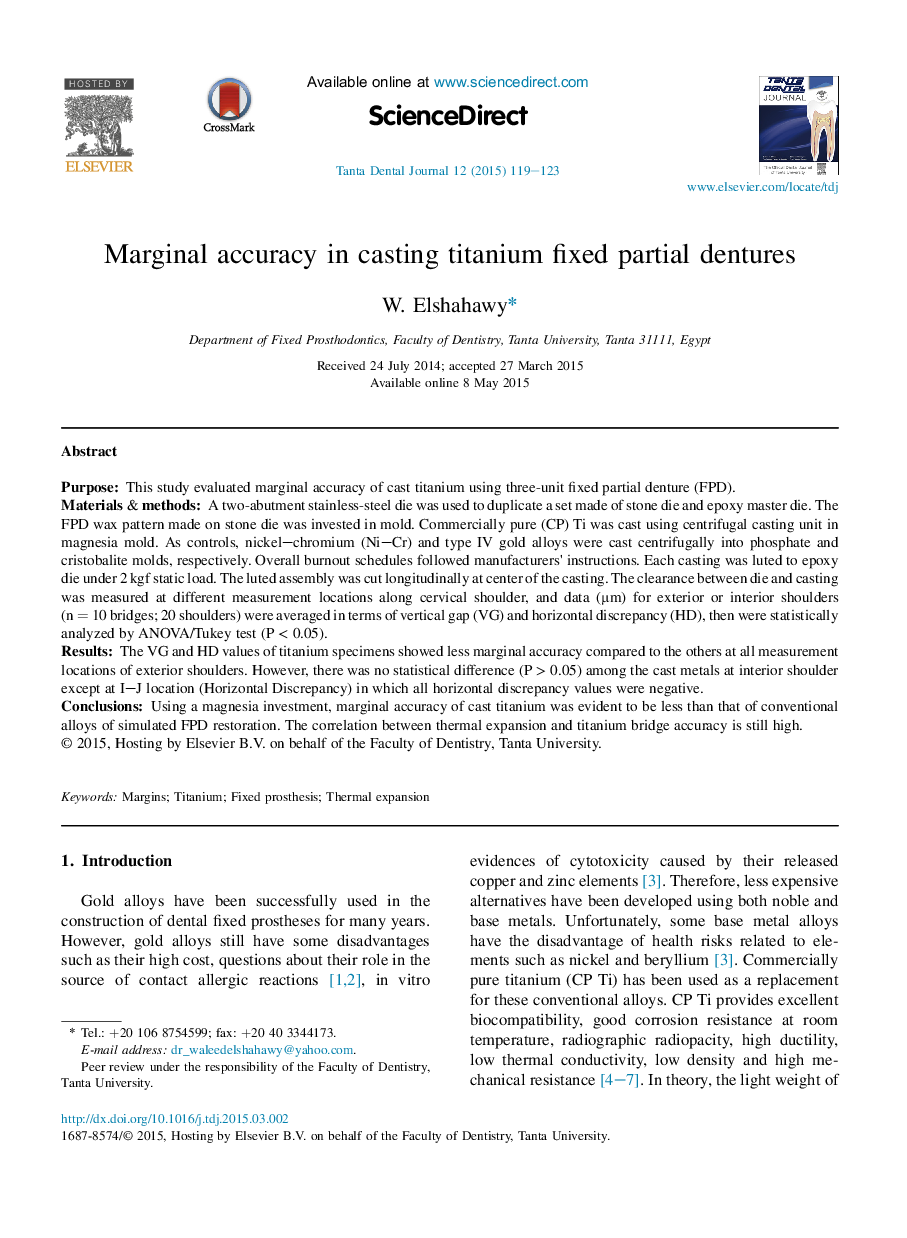| Article ID | Journal | Published Year | Pages | File Type |
|---|---|---|---|---|
| 3179684 | Tanta Dental Journal | 2015 | 5 Pages |
PurposeThis study evaluated marginal accuracy of cast titanium using three-unit fixed partial denture (FPD).Materials & methodsA two-abutment stainless-steel die was used to duplicate a set made of stone die and epoxy master die. The FPD wax pattern made on stone die was invested in mold. Commercially pure (CP) Ti was cast using centrifugal casting unit in magnesia mold. As controls, nickel–chromium (Ni–Cr) and type IV gold alloys were cast centrifugally into phosphate and cristobalite molds, respectively. Overall burnout schedules followed manufacturers' instructions. Each casting was luted to epoxy die under 2 kgf static load. The luted assembly was cut longitudinally at center of the casting. The clearance between die and casting was measured at different measurement locations along cervical shoulder, and data (μm) for exterior or interior shoulders (n = 10 bridges; 20 shoulders) were averaged in terms of vertical gap (VG) and horizontal discrepancy (HD), then were statistically analyzed by ANOVA/Tukey test (P < 0.05).ResultsThe VG and HD values of titanium specimens showed less marginal accuracy compared to the others at all measurement locations of exterior shoulders. However, there was no statistical difference (P > 0.05) among the cast metals at interior shoulder except at I–J location (Horizontal Discrepancy) in which all horizontal discrepancy values were negative.ConclusionsUsing a magnesia investment, marginal accuracy of cast titanium was evident to be less than that of conventional alloys of simulated FPD restoration. The correlation between thermal expansion and titanium bridge accuracy is still high.
